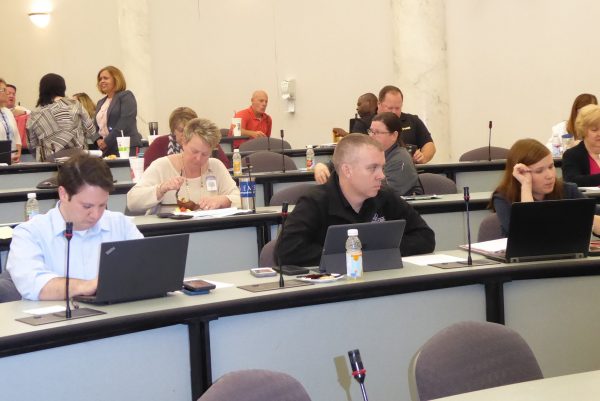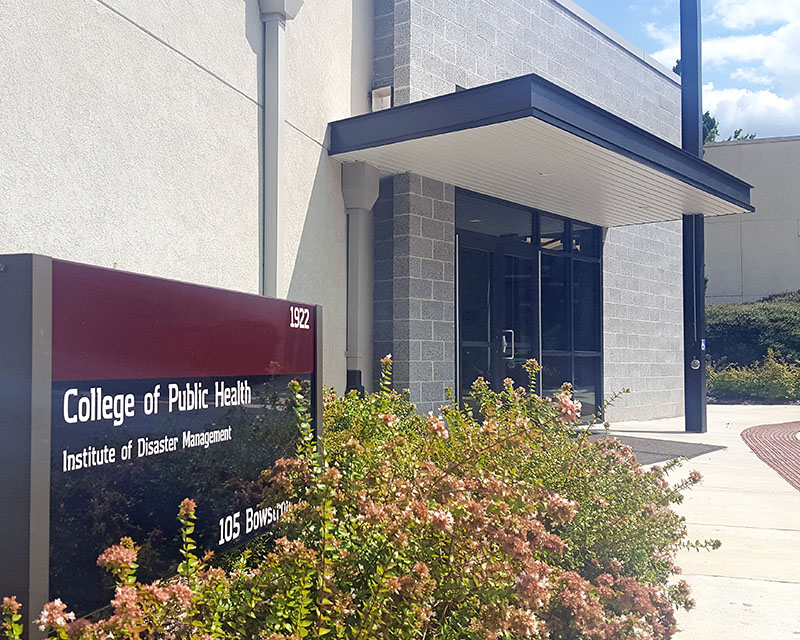The mission of the University of Georgia Institute for Disaster Management (IDM) is to reduce the casualties and social disruption of natural and human-made disasters through research, teaching, and service. The Institute works with academic, state and federal organizations, as well as private partners, to develop a coordinated research and training program for standardizing emergency healthcare and community resilience nationwide, while providing an emergency response resource to the Southeastern United States.
A unit of the UGA College of Public Health, the Institute for Disaster Management was originally created in 2002 as a Centers for Disease Control and Prevention (CDC) Center for Public Health Preparedness. Since that time, the Institute has successfully collaborated with the American Medical Association (AMA) and the CDC for the development of the National Disaster Life Support (NDLS) family of courses (ADLS, BDLS, CDLS). The NDLS has been accepted as a national standard for mass casualty training by the American Medical Association, and has been taught to over 200,000 emergency personnel in a wide range of fields in all 50 states and 17 nations.

Dr. Curt Harris, IDM associate director, and Tawny Waltz, IDM assistant research scientist, lead a planning meeting of the Infectious Disease Network, where best practices for transporting highly infectious patients is discussed and implemented.
UGA research led by the Institute for Disaster Management has averaged $1 million per year since the start of the century. Funding agencies have included the CDC, the U.S. Assistant Secretary for Preparedness and Response (ASPR), the Georgia Department of Public Health (DPH), the U.S. Department of Homeland Security (DHS), the Georgia Emergency Management and Homeland Security Agency (GEMA), the U.S. Department of Agriculture (USDA), and the Health Resources Service Administration (HRSA).
For the last decade, the Institute has been contracted by the Georgia Department of Public Health – with funding from ASPR – to manage the state’s health care community preparedness program by designing and implementing disaster exercises for hospitals, nursing homes and other health care organizations across the state. As part of a multi-year exercise cycle, all of the health care organizations in Georgia, including its 140 hospitals, have had the opportunity to participate in a full-scale exercise as part of their preparation for mass casualty events. This affords a unique opportunity for UGA graduate students in disaster management to participate directly in the emergency preparedness exercises with nearly 700 institutional stakeholders in Georgia. The Institute’s preparedness research and training efforts will soon look beyond Georgia to other areas in the Southern United States. A new $3 million grant from the Gulf Research Sciences Program of the National Academies of Sciences, Engineering and Medicine and the Robert Wood Johnson Foundation will address the unique challenges faced by Cambodian and Laotian refugees living in the coastal communities of Southern United States.

Members of the UGA Institute of Disaster Management meet with Laotian refugees.
The global endeavors of the Institute have included 12 scientific expeditions – funded by the U.S. Department of Energy – into Chernobyl to study those areas that had received the highest levels and most widespread geographic distribution of radioactivity ever released by airborne dispersion. More recently, Institute for Disaster Management researchers made six expeditions to the Fukushima Exclusion Zone, established in 2011 after the triple disaster of the Fukushima Daiichi nuclear power plant meltdowns, and Tōhoku earthquake and tsunami. These visits provided the Institute a unique opportunity to study the impacts of radioactivity on ecosystems such as might occur in a nuclear war environment. The work allowed the team to produce a set of distinctive and ground-breaking papers in the open scientific literature, which have since been incorporated into national and global policy at the highest levels. Topics addressed in these papers have included nuclear war medical preparedness as well as unique mass casualty simulations for cities all over the world.

Dr. Cham Dallas, University Professor and director of the UGA Institute for Disaster Management (IDM), led a decade of University of Georgia research in the most highly contaminated areas from the Chernobyl disaster. His team’s work was featured on a one-hour CNN’s special which aired on the 10–year anniversary of the accident. (In photo: Dr. Dallas stands before he world’s largest abandoned city, Pripyat, in the middle of the radioactive Exclusion Zone. The Chernobyl reactor can be seen in the distance to the right.)
Through the Institute of Disaster Management, the Master of Public Health (MPH) program at the UGA College of Public Health offers a concentration in Disaster Management. MPH students can further expand their expertise by pairing their MPH with a dual graduate degree in medicine (MD), veterinary medicine (DVM), pharmacy (PharmD), business administration (MBA), law (JD), social work (MSW). If the student is seeking another concentration, the Institute offers a Graduate Certificate in Disaster Management as well.
Undergraduate degree offerings through the Institute includes an Undergraduate Minor in Disaster Management, as well as an Undergraduate Certificate in Disaster Management. Undergraduates can also pair their BA or BS degree with an MPH through UGA’s Accelerated Master’s Program. Sixty-two students are currently enrolled in UGA Disaster Management classes for the 2017 Fall Semester.
Learn more about the UGA Institute for Disaster Management at https://publichealth.uga.edu/departments/institute-for-disaster-management/.

Faculty, staff and graduate students of the UGA Institute for Disaster Management stand in the Institute’s new Emergency Operations Training Center. The EOTC’s interactive display screens are used in full-scale emergency response exercises involving hundreds of emergency support stakeholders, as well as research and training conducted by the Institute.
– Rebecca Ayer
Posted August 30, 2017.
Originally published in ASPPH Friday Letter Aug. 30, 2017 for Preparedness Month Feature.







